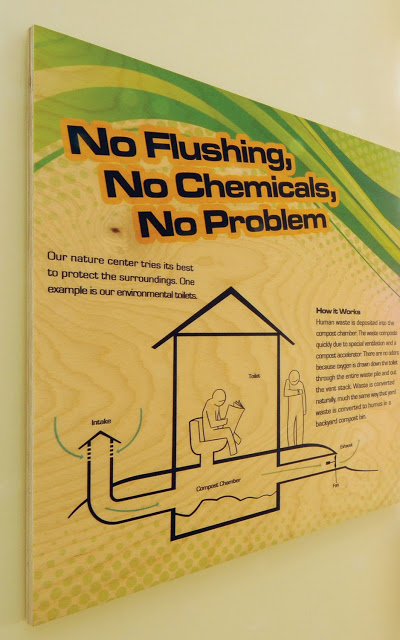Green Nature Center Design: Make your building part of the exhibit
Friday, February 21, 2014 1:50 PM by Betty Brennan in Professional and Industry Tips


Natural history exhibits used to be cases full of dead butterflies on pins. The visitor had the privilege of trying to decipher spidery, faded, handwritten labels giving only Latin names and no interpretation. In the past 50 years, exhibits have evolved tremendously, and now the visitor is the focus. Exhibits are based upon the visitor experience and how a message is communicated. Nature centers themselves have also evolved, leaving behind the wood paneled outbuildings and becoming well designed architectural showpieces. As the design of the building has become both more visible and intentional, clients have also sought out features that are sustainable.
Sustainability not only reinforces the mission of a nature center, it improves the bottom line. Low-flow toilets, LED lighting, and rainwater collection can all reduce utility bills while showing how we can step lighter on the planet. The more hidden sustainable features, like those that can gain a building LEED credits, also deserve to be recognized. Reused lumber, locally sourced building materials, and low-VOC finishes are harder for the visitor to notice. While many nature centers include a graphic panel detailing the green building’s features, they are missing a valuable interpretive opportunity.
Visitors remember experiences, not graphic panels. That graphic listing all the sustainable features should be a summary, not the only way the visitor will learn about what makes the facility green. The low-flow toilets should be labeled, with a “You’re helping too!” attitude. If there are deep overhangs outside the picture windows, include an explanation of how building design takes the seasonal angle of the sun into account. Where reused lumber is visible, wood burn text into the surface telling the source of the wood. Once the features of the building are highlighted where the visitor interacts with them, the exhibits can play their role.
Tie them in. While historical topics like glaciation and forest fires may not lend themselves to discussing sustainability, most ecological topics will. Watersheds touch upon water use, runoff, and water conservation. Any time the visitor is asked to consider their own impact, be sure to lead by example with how the building and site tackle the issue. By integrating the building’s sustainable features into your exhibits, your visitors will see your facility as more than just a pretty face. They will walk away knowing it also supports your mission.
So don’t ignore the amazing interpretive resource you already have, the building where you work! Let me know how you’re interpreting your facility’s sustainable features in the comments below.
Share this on social networks